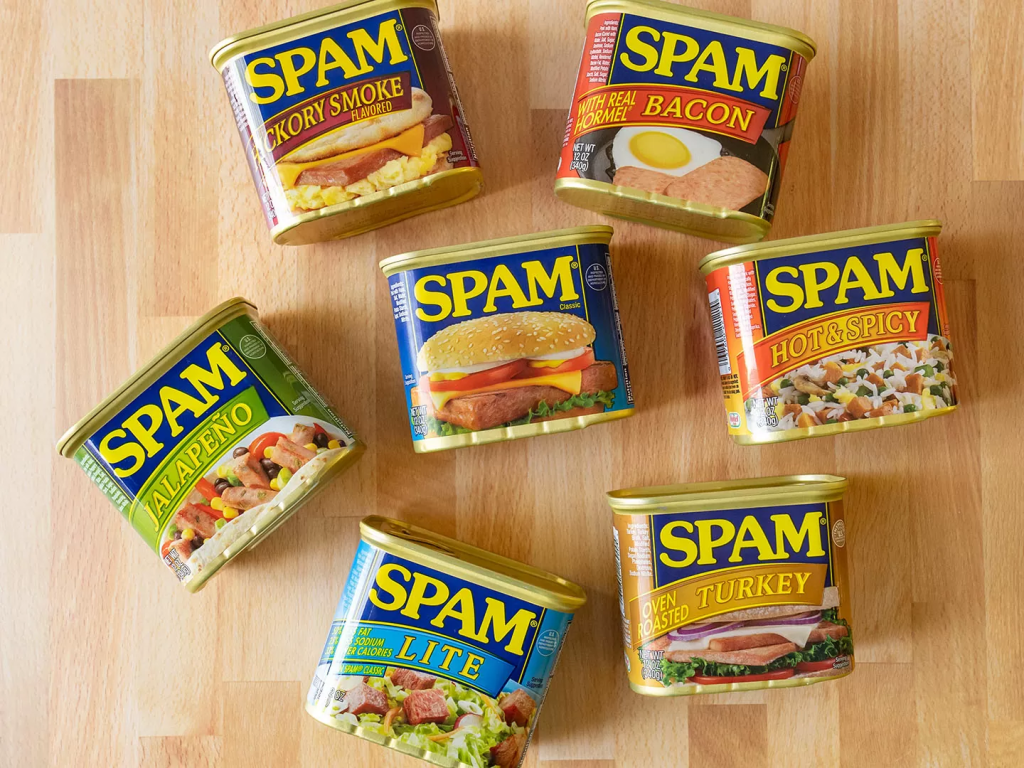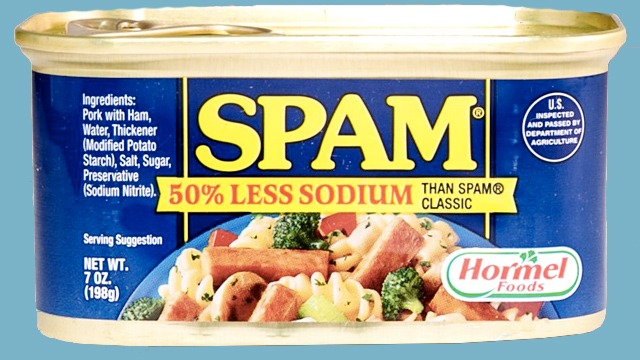When you hear the word “SPAM,” chances are your mind flashes to that familiar blue and yellow can sitting in a pantry or grocery aisle. But this legendary food product has a story that goes way beyond convenience meals and quirky internet jokes. Born in 1937 and brought to life by Hormel Foods Corporation, SPAM has remained a household staple for generations.

Why did it become such a big deal? Simple: it was cheap, lasted forever on the shelf, and didn’t need refrigeration. During World War II, it became a vital source of protein for soldiers around the world. From army rations to home kitchens, SPAM gained a reputation for being both practical and filling.
What Does SPAM Really Stand For?
This might surprise you, but the name “SPAM” doesn’t have one agreed-upon meaning. While most believe it stands for “Spiced Ham,” other interpretations have floated around over the years. Some say it means “Shoulder of Pork And Ham,” while others go with the more tongue-in-cheek “Specially Processed American Meat.”
Whatever the case may be, the name stuck—and so did the product. And let’s be honest, it’s fun to speculate. That mystery only adds to SPAM’s oddball charm.
Video : What You Should Really Know About Spam
Why SPAM Took Off Around the World
While Americans have had a long-standing relationship with SPAM, it also found its way into the hearts (and stomachs) of people in places like Hawaii, South Korea, and the Philippines. In Hawaii, it’s a beloved breakfast food. In South Korea, it’s part of holiday gift sets. In the Philippines, you’ll find it on the menu at breakfast or tucked inside a rice dish.
How did this happen? Well, U.S. troops introduced SPAM to these regions during the war, and it stuck. Over time, the product became woven into local cuisines in creative and delicious ways.
Flavors Galore: There’s More Than Just One SPAM
Think SPAM is just that one plain version your grandparents used to slice up for sandwiches? Think again. The brand has evolved into a flavor playground. You’ll find options like:
- Hickory Smoke
- Hot & Spicy
- Garlic
- Teriyaki
- SPAM with Cheese

Yep, you read that right—there’s a cheesy version. Whether you want something smoky, spicy, or savory, SPAM has a flavor to fit nearly every craving.
So, What Exactly Is In a Can of SPAM?
Despite all the jokes and memes, the ingredients in classic SPAM are s
- Pork (which includes ham)
- Salt
- Water
- Sugar
- Potato starch (used to hold everything together)
- Sodium nitrate (a preservative)
That’s it. No mystery meat, no strange fillers. It’s basically seasoned pork with a few additives to keep it fresh and stable over time.
The Real Concern: What’s the Deal with Sodium Nitrate?

Now, let’s talk about that last ingredient—sodium nitrate. It’s a preservative found in many cured meats, from bacon to hot dogs to, yes, SPAM. Sodium nitrate helps meat stay pink, taste fresh, and last longer on store shelves. But there’s a catch.
Research suggests that consuming high levels of nitrates regularly may increase the risk of serious health issues, including colorectal cancer. Other conditions linked to high nitrate consumption include:
- Non-Hodgkin lymphoma
- Heart disease
- Stomach and pancreatic cancers
- Thyroid issues
- Ovarian and esophageal cancers
That doesn’t mean one slice of SPAM will send your health into a spiral. In fact, nitrates occur naturally in vegetables like spinach and celery and can even show up in drinking water. The key, as always, is moderation.
Video : What’s Really in Spam? The Truth Behind the Iconic Canned Meat
How Much Is Too Much?
The Centers for Disease Control and Prevention (CDC) recommends keeping your daily intake of sodium nitrate below 3.7 milligrams per kilogram of body weight. So if you weigh 150 pounds (or around 68 kilograms), that’s roughly 250 milligrams a day.
Here’s the tricky part—most food packaging doesn’t tell you exactly how much sodium nitrate it contains. That makes it hard to keep track, especially if you eat multiple types of processed meat in a single day.
SPAM in the Spotlight: Nostalgia or Health Risk?
SPAM is part of American culture, no doubt about it. It’s iconic, comforting, and convenient. But in today’s wellness-conscious world, many are reevaluating the foods they once took for granted.
Does that mean you have to toss every can of SPAM in your cupboard? Not at all. But it’s worth knowing what’s in your food and how it affects your body over time. You might enjoy SPAM as a nostalgic treat, or as an occasional ingredient in a fun recipe. Just don’t treat it like a health food.

Conclusion: Know What You Eat, Enjoy What You Love
SPAM isn’t just a punchline—it’s a product with a long, fascinating history and a dedicated global fanbase. Whether you love it fried with eggs or served up in musubi, it brings comfort to millions. But like any processed food, it’s important to understand what you’re putting into your body.
So go ahead and enjoy that slice of SPAM—just be mindful of the sodium, the preservatives, and how it fits into your overall diet. At the end of the day, informed choices are the best kind.